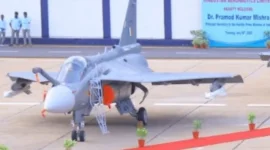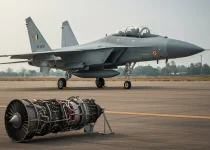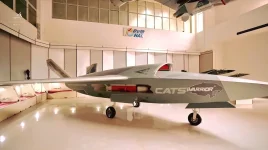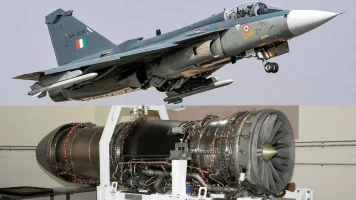- Views: 2K
- Replies: 7
The Indian Air Force (IAF) has formally proposed to the Ministry of Defence (MoD) that a dedicated Collaborative Combat Aircraft (CCA) program receive full government funding and priority status.
This significant push draws inspiration from a recent initiative by Hindustan Aeronautics Limited (HAL), which focuses on teaming autonomous drone aircraft with manned fighter jets to enhance overall air combat capability.
The IAF views this strategy as essential for modernizing its fleet and addressing current operational requirements.
This strategic move occurs while the IAF contends with a fighter squadron deficit, operating with approximately 31 squadrons against the sanctioned strength of 42.
The need for modernization is further underscored by the impending retirement of older aircraft fleets, most notably the MiG-21s, with the final squadron expected to be phased out by 2025.
The development of CCAs is presented as a key opportunity to bolster India's air warfare strength, align with the national “Make in India” manufacturing initiative, and effectively manage regional security challenges.
The urgency behind the IAF's call for CCAs stems from existing pressures on its fleet strength. Delays in the delivery of indigenous aircraft, such as the Tejas Mk1A, have compounded the issue.
An order for 83 Tejas Mk1A jets, finalized in 2021, faced setbacks primarily due to engine supply issues, pushing deliveries beyond the initial February 2024 target.
To mitigate the shortfall from retiring MiGs, the IAF recently initiated a tender process worth approximately ₹650 billion (around $7.8 billion USD) for an additional 97 Tejas Mk1A jets.
However, increasing production capacity remains a significant hurdle, although HAL aims to produce 24 jets annually from its third assembly line in Nashik by 2026.
Collaborative Combat Aircraft, sometimes referred to as 'Loyal Wingmen', offer a promising and cost-effective way to increase the IAF's combat mass.
Drawing lessons from concepts like HAL's CATS Warrior and a proposed larger variant (CATS Warrior II), these unmanned platforms are estimated to cost between $15–20 million per unit – roughly one-quarter the cost of an advanced manned fighter like the Rafale.
The IAF envisions acquiring a fleet of 200 to 300 CCAs. These autonomous drones would operate in conjunction with manned fighters such as the Su-30MKI and India's future fifth-generation Advanced Medium Combat Aircraft (AMCA), potentially undertaking high-risk surveillance or strike missions along sensitive border areas like the Line of Actual Control (LAC) with China or the Line of Control (LOC) with Pakistan.
In strong support of the government's 'Atmanirbhar Bharat' (Self-Reliant India) initiative, the IAF's proposal emphasizes indigenous development for the CCA program.
India possesses existing experience in unmanned systems through the Defence Research and Development Organisation (DRDO), notably with the ongoing Ghatak stealth UCAV (Unmanned Combat Aerial Vehicle) project, although this specific program awaits formal funding from the MoD. HAL has also independently funded its CATS Warrior demonstrator.
The IAF suggests leveraging these foundations, advocating for public-private partnerships to potentially accelerate the CCA development timeline.
HAL, with its work on the CATS Warrior and plans for the more advanced CATS Warrior II (which requires MoD support for timely progress), is identified as a key potential partner in this critical future program.





